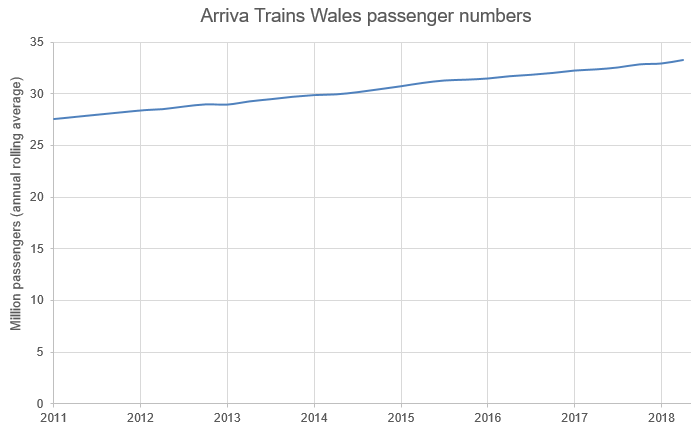|
Treherbert Railway Station
Treherbert railway station serves the village of Treherbert in Rhondda Cynon Taf, Wales. It is the northern terminus of the Rhondda Line, north west of Cardiff Central. History A station was first opened on this site by the Taff Vale Railway on 12 January 1863, and was the connecting point of the Rhondda and Swansea Bay Railway with the collieries of the Rhondda Fawr via a 1-mile 1683 yard tunnel (completed in 1890) which was one of the longest in South Wales. The TVR had opened its Rhondda Fawr branch from Dinas (north of ) in 1856 (to serve the Marquess of Bute's newly opened colliery)"Treherbert" 'Rhonndda Cynon Taf Library Service''; Retrieved 24 March 2016 and began running passenger trains to the town seven years later. Services over the R&SB via |
Treherbert
Treherbert () is a village and community situated at the head of the Rhondda Fawr valley in the county borough of Rhondda Cynon Taf, Wales. Historically part of Glamorgan, Treherbert is a former industrial coal mining village which was at its economic peak between 1850 and 1920. Treherbert is the upper most community of the Rhondda Fawr and encompasses the districts of Blaencwm, Blaenrhondda, Tynewydd and Pen-yr-englyn. Pronunciation 'Tre-Herbert' or 'Tre Herbert' is correctly pronounced as in 'Tre Herbert'. 'Tre' is a mutation of the Welsh word ‘Tref’, meaning ‘town’, derived from the word for a homestead or hamlet under old Cymric law. ‘Herbert’ was the surname of the Earls of Pembroke, a dynasty of local magnates. History There is evidence of settlements in the Rhondda dating back to Celtic times, but prior to the Industrial Revolution and the advent of coal mining the villages of Treherbert, Tynewydd, Blaenrhondda and Blaencwm consisted of a number of isolated ... [...More Info...] [...Related Items...] OR: [Wikipedia] [Google] [Baidu] |
Rhondda Tunnel
The Rhondda Tunnel is an abandoned railway tunnel that runs between the Rhondda and the Afan Valleys in South Wales. It is long, making it the third longest railway tunnel in Wales, and the seventeenth longest in the United Kingdom. The tunnel, constructed by the Rhondda and Swansea Bay Railway, was engineered by Sydney William Yockney. In June 1885, construction commenced from Blaencwm in the Rhondda Valley and Blaengwynfi in the Afan Valley. Progress slowed because of manpower shortages and water seepage. After contractor, William Jones was replaced by Lucas and Aird, more men brought in and progress was restored. Completed on 2 July 1890, it has a single ventilation shaft around from its western end. It is almost feet below ground at its deepest point. The tunnel's single track line split into double track on either side of its portals. Within decades of opening, the tunnel lining became distorted because of mining activity in the close vicinity. Between 1938 and 1953, ... [...More Info...] [...Related Items...] OR: [Wikipedia] [Google] [Baidu] |
Former Taff Vale Railway Stations
A former is an object, such as a template, gauge or cutting die, which is used to form something such as a boat's hull. Typically, a former gives shape to a structure that may have complex curvature. A former may become an integral part of the finished structure, as in an aircraft fuselage, or it may be removable, being using in the construction process and then discarded or re-used. Aircraft formers Formers are used in the construction of aircraft fuselage, of which a typical fuselage has a series from the nose to the empennage, typically perpendicular to the longitudinal axis of the aircraft. The primary purpose of formers is to establish the shape of the fuselage and reduce the column length of stringers to prevent instability. Formers are typically attached to longerons, which support the skin of the aircraft. The "former-and-longeron" technique (also called stations and stringers) was adopted from boat construction, and was typical of light aircraft built until the ad ... [...More Info...] [...Related Items...] OR: [Wikipedia] [Google] [Baidu] |
DfT Category F1 Stations
The Department for Transport (DfT) is a department of His Majesty's Government responsible for the English transport network and a limited number of transport matters in Scotland, Wales and Northern Ireland that have not been devolved. The department is run by the Secretary of State for Transport, currently (since 25 October 2022) Mark Harper. The expenditure, administration and policy of the Department for Transport are scrutinised by the Transport Committee. History The Ministry of Transport was established by the Ministry of Transport Act 1919 which provided for the transfer to the new ministry of powers and duties of any government department in respect of railways, light railways, tramways, canals and inland waterways, roads, bridges and ferries, and vehicles and traffic thereon, harbours, docks and piers. In September 1919, all the powers of the Road Board, the Ministry of Health, and the Board of Trade in respect of transport, were transferred to the new ministry. ... [...More Info...] [...Related Items...] OR: [Wikipedia] [Google] [Baidu] |
Railway Stations In Rhondda Cynon Taf
Rail transport (also known as train transport) is a means of transport that transfers passengers and goods on wheeled vehicles running on rails, which are incorporated in tracks. In contrast to road transport, where the vehicles run on a prepared flat surface, rail vehicles (rolling stock) are directionally guided by the tracks on which they run. Tracks usually consist of steel rails, installed on sleepers (ties) set in ballast, on which the rolling stock, usually fitted with metal wheels, moves. Other variations are also possible, such as "slab track", in which the rails are fastened to a concrete foundation resting on a prepared subsurface. Rolling stock in a rail transport system generally encounters lower frictional resistance than rubber-tyred road vehicles, so passenger and freight cars (carriages and wagons) can be coupled into longer trains. The operation is carried out by a railway company, providing transport between train stations or freight customer facili ... [...More Info...] [...Related Items...] OR: [Wikipedia] [Google] [Baidu] |
Diesel Multiple Units
A diesel multiple unit or DMU is a multiple-unit train powered by on-board diesel engines. A DMU requires no separate locomotive, as the engines are incorporated into one or more of the carriages. Diesel-powered single-unit railcars are also generally classed as DMUs. Diesel-powered units may be further classified by their transmission type: diesel–mechanical DMMU, diesel–hydraulic DHMU, or diesel–electric DEMU. Design The diesel engine may be located above the frame in an engine bay or under the floor. Driving controls can be at both ends, on one end, or in a separate car. Types by transmission DMUs are usually classified by the method of transmitting motive power to their wheels. Diesel–mechanical In a diesel–mechanical multiple unit (DMMU), the rotating energy of the engine is transmitted via a gearbox and driveshaft directly to the wheels of the train, like a car. The transmissions can be shifted manually by the driver, as in the great majority of first-gener ... [...More Info...] [...Related Items...] OR: [Wikipedia] [Google] [Baidu] |
British Rail Class 150
The British Rail Class 150 ''Sprinter'' is a class of diesel multiple unit passenger trains; they were developed and constructed by BREL York between 1984 and 1987 for use on regional services across the UK. The type is a second-generation design, built to more modern standards and based on BR's Mark 3 body design for longer-distance services. It was developed alongside the lower-cost ''Pacers'', which were built using bus parts, for use on short-distance services. Two prototype units were built, followed by 135 production units in two batches. Subsequently, further members of the Sprinter family were also developed and introduced to service, including the Class 155, Class 156, Class 158 and Class 159. Background By the beginning of the 1980s, British Rail (BR) was operating a large fleet of first-generation DMUs of various designs. While formulating its long-term strategy for this sector of its operations, BR planners recognised that there would be considerable costs ... [...More Info...] [...Related Items...] OR: [Wikipedia] [Google] [Baidu] |
Leanne Wood
Leanne Wood (born 13 December 1971) is a Welsh politician who served as the leader of Plaid Cymru from March 2012 to September 2018, and served as a Member of the Senedd (MS) from 2003 to 2021. Born in the Rhondda, she was elected as to the then National Assembly for Wales in 2003, representing South Wales Central until 2016, when she was elected for Rhondda. She lost her seat to Welsh Labour at the 2021 Senedd election. Ideologically, Wood identifies as a socialist, republican and proponent of Welsh independence. She was the first female leader of Plaid Cymru and the first to learn Welsh as an adult, rather than being brought up speaking Welsh. Early life Wood was born in Llwynypia Hospital on 13 December 1971, the daughter of Jeff and Avril (née James) Wood."Wood, Leanne" ''Who's Who 2014'', A & C Black, an imprint of B ... [...More Info...] [...Related Items...] OR: [Wikipedia] [Google] [Baidu] |
Arriva Trains Wales
Arriva Trains Wales (ATW; cy, Trenau Arriva Cymru) was a British train operating company owned by Arriva UK Trains that operated the Wales & Borders franchise. It ran urban and inter-urban passenger services to all railway stations in Wales, including , , , , and , as well as to certain stations in England such as , , , Crewe railway station, Crewe, and . In August 2003, Arriva UK Trains was awarded the newly created Wales & Borders franchise by the Strategic Rail Authority, Arrival Trains Wales began operation during December 2003, taking over from Wales and Borders. Following the implementation of the Railways Act 2005 and Transport (Wales) Act 2006, responsibility for the franchise was devolved to the Welsh Government, which worked closely with Arriva Trains Wales during its period of operations. Numerous service changes were made under the company's management; on 6 February 2008, the Ebbw Valley Railway was partially re-opened to passenger services for the first time in ... [...More Info...] [...Related Items...] OR: [Wikipedia] [Google] [Baidu] |
Blaenrhondda
Blaenrhondda is a village in the county borough of Rhondda Cynon Taf, Wales, lying at the head the Rhondda Fawr valley. Blaenrhondda is a village and is part of the community of Treherbert. History The earliest evidence of people inhabiting the area are the remains of an Iron Age settlement of several roundhouses grouped together in an obvious community, known as Hen Dre'r Mynydd. The dry wall layout of the ruinous site has led archaeologists to believe that the people who lived in the area were early farmers. It has been identified as the largest undefended Iron Age settlement in south east Wales. Before the industrialisation of the Rhondda Valleys in the late 19th century, Blaenrhondda was an agricultural area and sparsely populated. With the coming of the coal industry two mines were sunk in the locality. The first was the North Dunraven, also known as the Blaenrhondda, sunk in 1859, followed by Fernhill Colliery around 1871. The Dunraven closed in the 1920s but the Fernhil ... [...More Info...] [...Related Items...] OR: [Wikipedia] [Google] [Baidu] |




